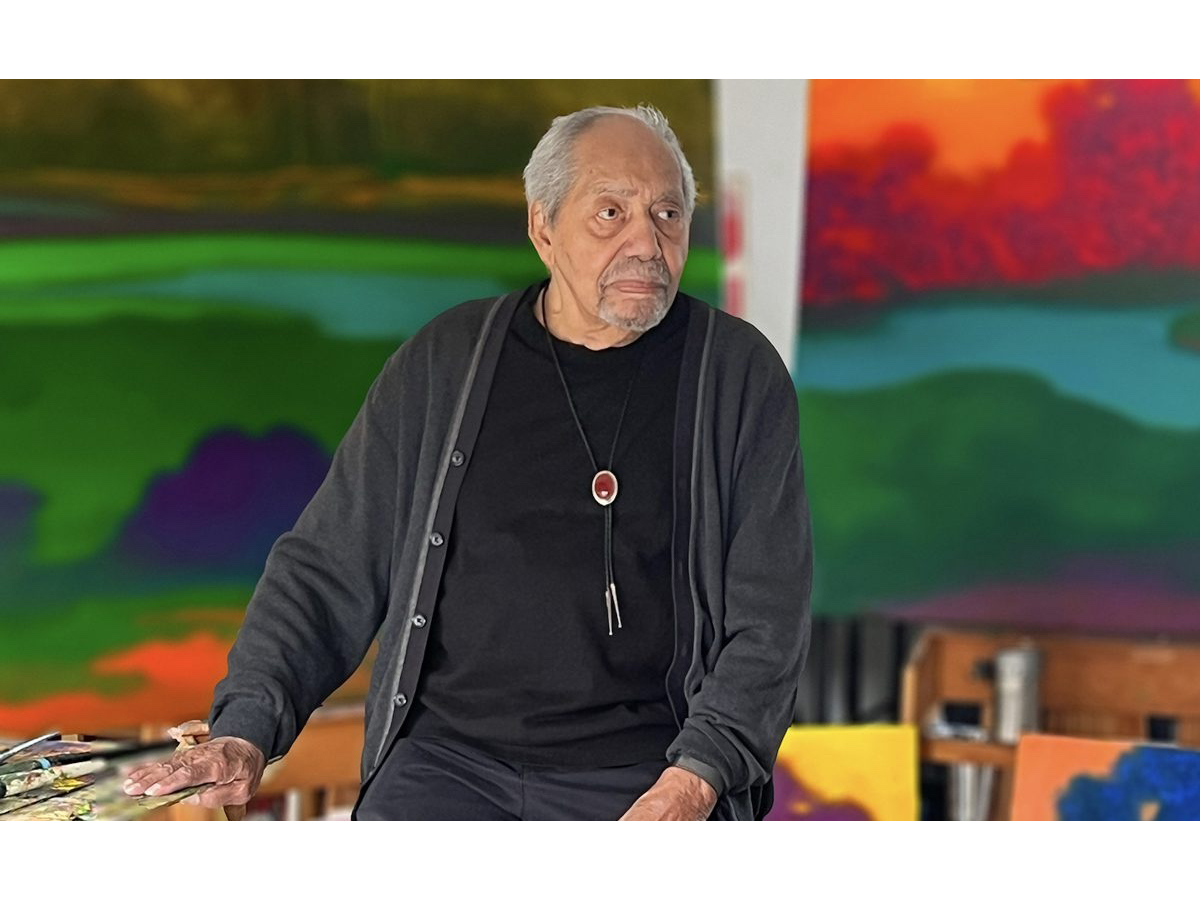Renowned landscape painter Richard Mayhew died at the age of 100 in his Soquel, California home last Thursday, September 26, as confirmed by Venus Over Manhattan Gallery and ACA Galleries in New York City. Informed by the entwined histories of his Black, Lumbee, Cherokee, Montaukett, and Shinnecock ancestry, Mayhew developed abstract landscapes he called “mindscapes” or “moodscapes,” in which vibrant colors meet raw emotion and spirituality is indistinguishable from the natural world.
The artist was born in 1924 to Alvin Mayhew and Lillian Goldman Mayhew and raised in Amityville on the south shore of Long Island. His paternal grandmother, Sarah Steele Mayhew, cared for him as a child and stoked his connections to Shinnecock culture, which he would continuously draw from throughout his practice. By the age of seven, Mayhew had also cultivated a relationship with the visual and performing arts, taking an interest in jazz music, seaside plein-air painting, and masterpieces at the Metropolitan Museum of Art.
Mayhew moved to New York City in 1947 as the Abstract Expressionism movement was rapidly gaining steam, and took courses at the Brooklyn Museum Art School, the Art Students League, and Pratt Institute. Those influences informed his softly diffused yet hyper-saturated landscape paintings, in which colors reverberate off each other harmoniously.

In a 2021 interview with the San Francisco Museum of Modern Art, Mayhew explained that “Afro-American and Native American blood is in the soil of the United States,” connecting him to the land both physically and spiritually.
His first solo show, at the Brooklyn Museum in 1955, was well-received, and his second two years later at Morris Gallery found equal critical success. Mayhew was awarded the John Hay Whitney fellowship in 1959, which funded a year-long fellowship to study at the Accademia di Belle Arti in Florence. He continued his stint in Europe with support from the Ford Foundation, finding inspiration in French Impressionism.
Mayhew returned to New York in 1962, at the height of the Civil Rights Movement. He joined Spiral, an African-American artists collective co-founded by Romare Bearden, Charles Aston, Hale Woodruff, and Norman Lewis that focused on Black art’s role in social change.

In addition to his painting practice, Mayhew was an instructor at the Art Students League, the Brooklyn Museum, Smith College, and finally Pennsylvania State College, where he taught for 14 years before retiring in 1991 and moving to Soquel, just outside of Santa Cruz, California. He was inducted into the National Academy of Art in 1969.
Mayhew celebrated his 100th birthday on April 3 at the Museum of African Diaspora (MoAD) in San Francisco, which hosted a traveling retrospective spanning over 50 years of his career in 2009. In addition to continuous support from MoAD, the artist has works in the permanent collections of the Brooklyn Museum, the Whitney Museum of American Art, the Los Angeles County Museum of Art, and the National Gallery of Art, among other institutions. The artist’s first posthumous show, devoted to his watercolors in particular, is set to open at Venus Over Manhattan on November 7.
Intuition guided Mayhew’s brushes across the canvas; he would paint while reflecting on his life, learnings, and subconscious.
“What I do with landscapes is internalize my emotional interpretation of desire, hope, fear, and love,” the artist told Hyperallergic in 2020. “So, instead of a landscape, it’s a mindscape.”
Mayhew is survived by his second wife Rosemary, daughter Ina Mayhew, and son Scott Mayhew.



